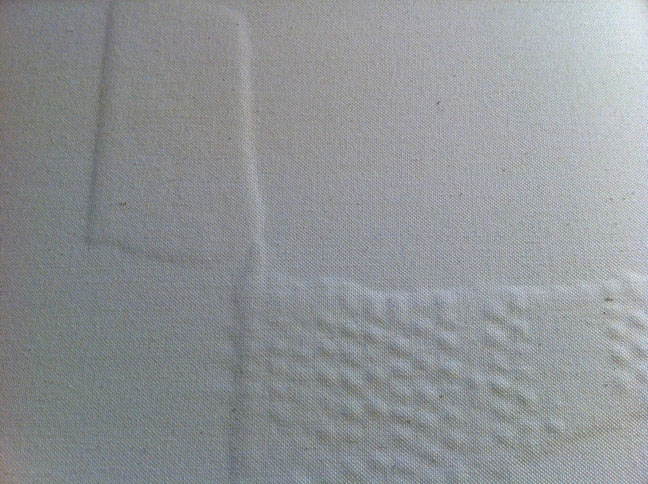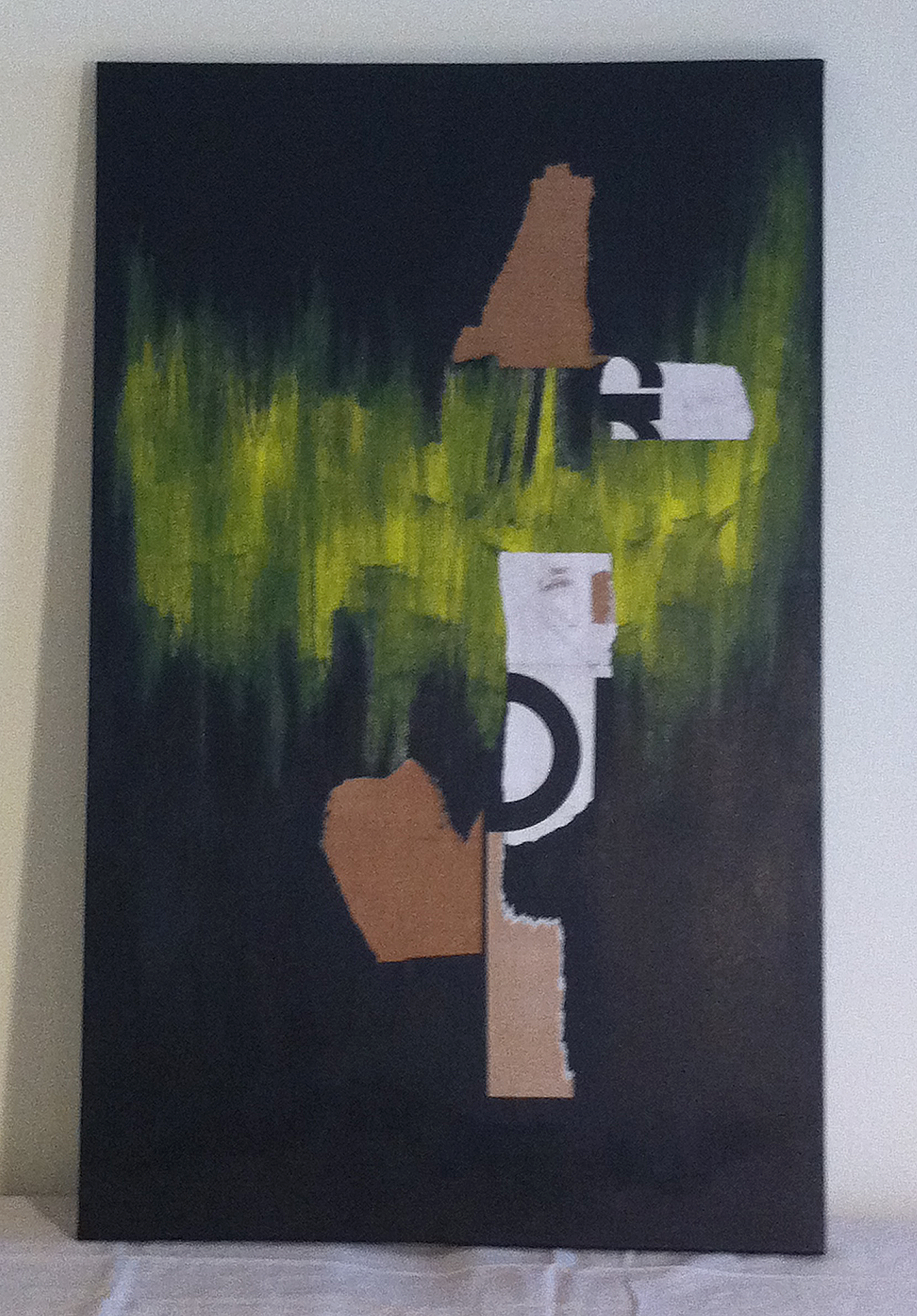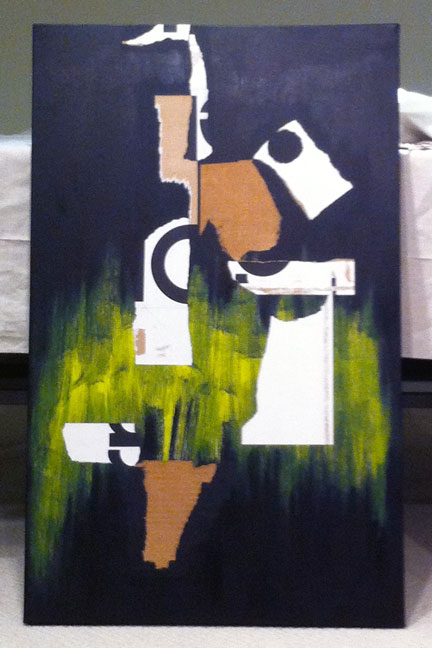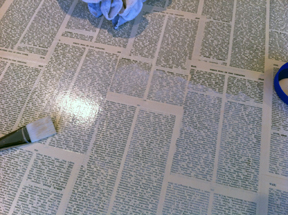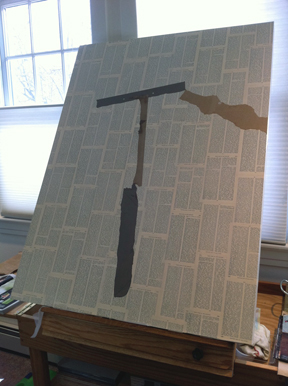I've been working on a large canvas that has some acrylic roughly brushed on it to respond to with my collage additions.
The back of the canvas (above) has been interesting to me. Typically I work on wood panels so seeing how the papers are adhering to the canvas has been fun. The dotted texture is created when corrugated is applied to the front of the canvas. I'm thinking if I decide to work further on canvas, it'd be intriguing to approach the composition from both sides, applying some pieces to the back side in order to have a textural effect appear on the viewing surface.
This piece is nearly complete now and will be shown in January at Spark Gallery's Members' Show. Thought I'd post a few of the steps along the way. You'll see that I've turned the canvas to evaluate which way the composition is strongest as it evolves. I'll post the finished collage here soon.

